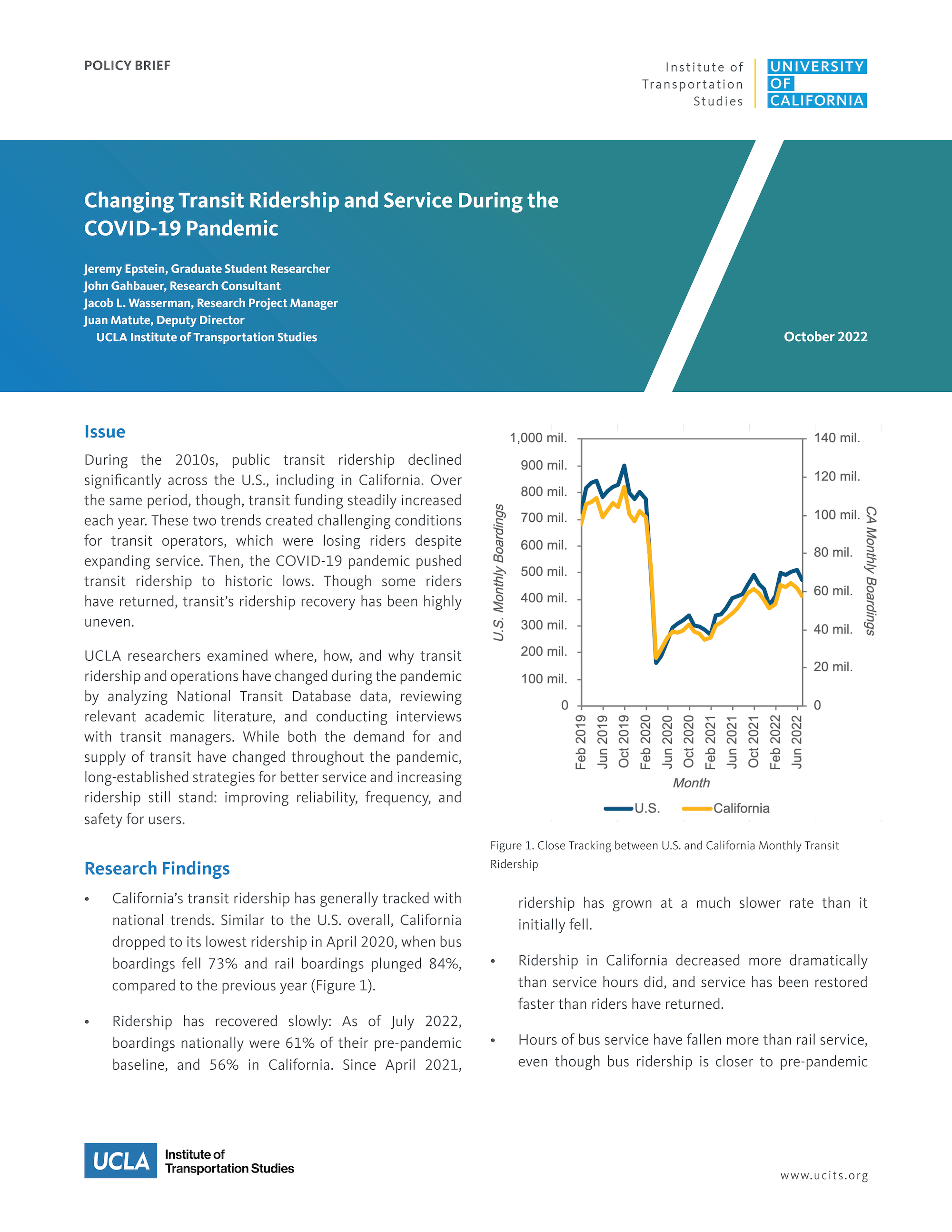Date: October 31, 2022
Author(s): Jeremy Epstein, John Gahbauer, Jacob L. Wasserman, Juan Matute
Abstract
During the 2010s, public transit ridership declined significantly across the U.S., including in California. Over the same period, though, transit funding steadily increased each year. These two trends created challenging conditions for transit operators, which were losing riders despite expanding service. Then, the COVID-19 pandemic pushed transit ridership to historic lows. Though some riders have returned, transit’s ridership recovery has been highly uneven.
About the Project
This project reports on changes and evolving operations in public transit during the COVID-19 pandemic. With a focus on transit ridership and transit service hours, this project first tracks where, how, and why transit supply and demand has changed. Since reaching an April 2020 nadir both nationally and in California, transit ridership has recovered slowly: as of July 2022, boardings were 61 percent and 56 percent of their respective national and California baselines. In California, service has been restored faster than riders have returned. This project next examines and showcases what established strategies for increasing transit ridership remain relevant in and post-pandemic.


